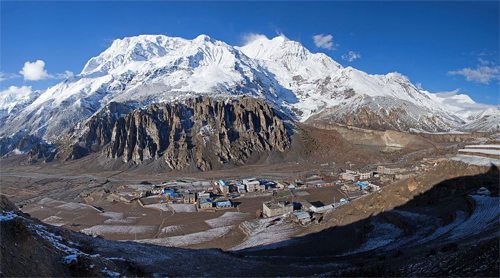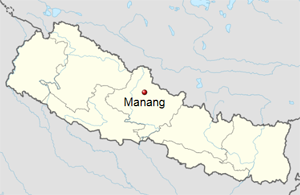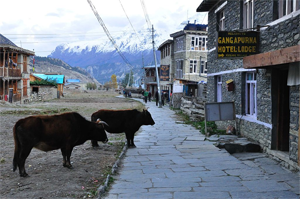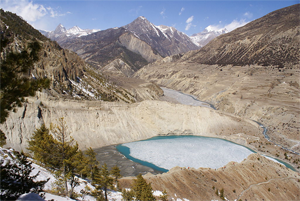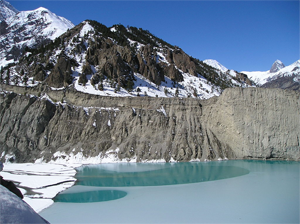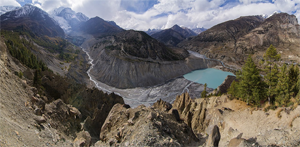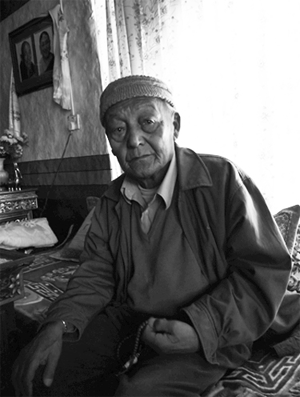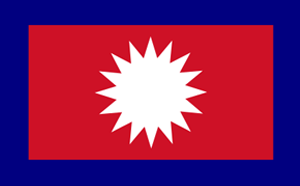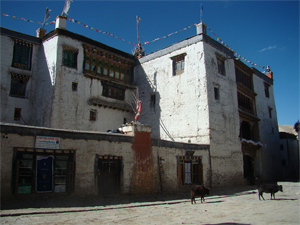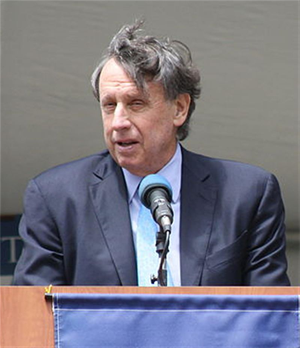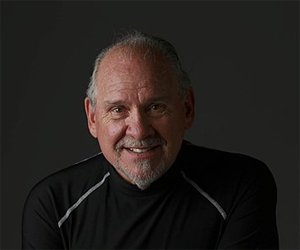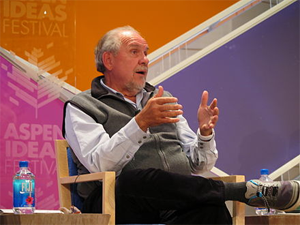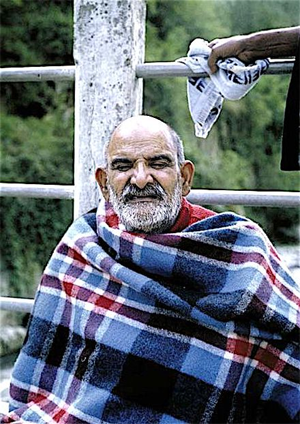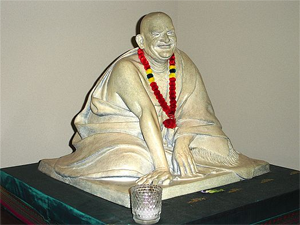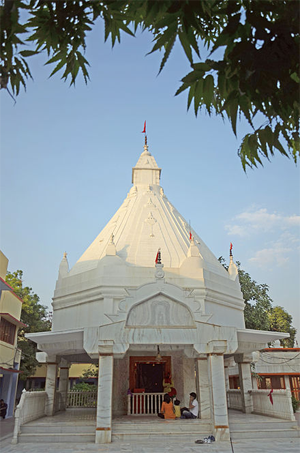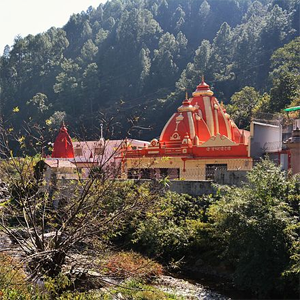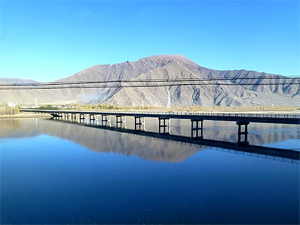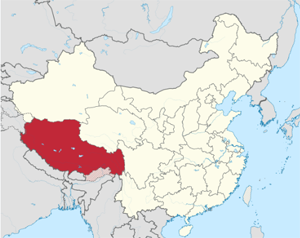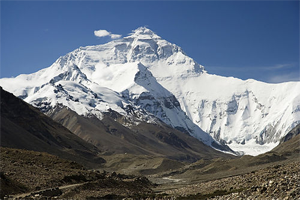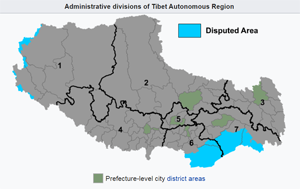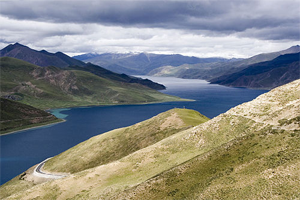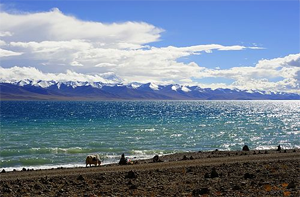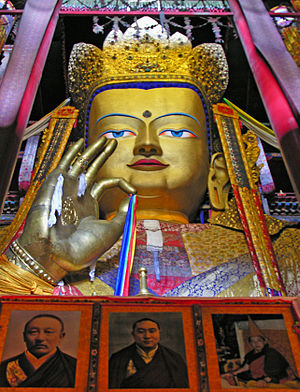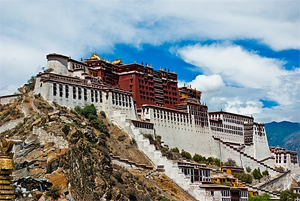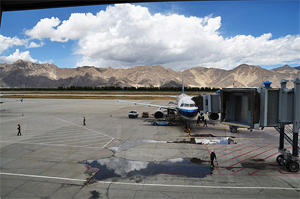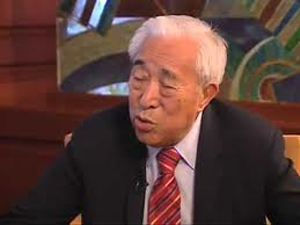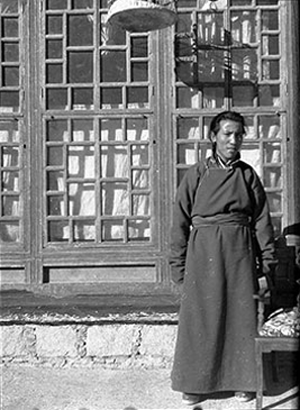Re: Freda Bedi, by Wikipedia
Janet Gyatso
by Wikipedia
Accessed: 11/24/19
NOTICE: THIS WORK MAY BE PROTECTED BY COPYRIGHT
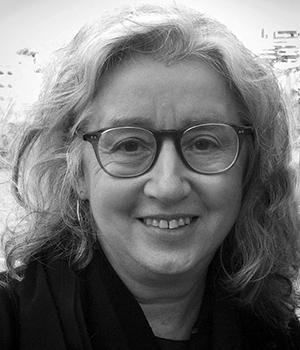
Janet Gyatso
Born Janet Frank
Philadelphia, Pennsylvania
Nationality American
Education University of California at Berkeley (BA, MA, and PhD)
Occupation Professor of Buddhist Studies, Associate Dean for Faculty and Academic Affairs
Years active 1981- current
Employer Harvard Divinity School
Known for Study of Buddhism and Tibetan and South Asian culture
Notable work
Being Human in a Buddhist World
Women in Tibet
Apparitions of the Self
In the Mirror of Memory
(See § Works.)
Janet Gyatso is a Religious Studies scholar currently employed as the Hershey Professor of Buddhist Studies and the Associate Dean for Faculty and Academic Affairs at Harvard Divinity School.[1] She is a member of the American Academy of Arts and Sciences. Gyatso's research interests are in Buddhism and its relationship to Tibetan and South Asian civilizations.[1]
Education
Gyatso attended the University of California at Berkeley for her BA, MA and PhD. She received her PhD in 1981 in the department of South and Southeast Asian Languages and Literatures [at Berkeley,] with a dissertation on Thangtong Gyalpo and the visionary tradition of Tibetan Buddhism [2][3] Prior to her PhD, she completed her Master of Arts in 1974 in Sanskrit, and her Bachelor of Arts in 1972 in Religious studies at Berkeley.
Career
Gyatso currently teaches at Harvard Divinity School and has taught with Harvard since 2001.[4] She is the first Hershey Professor of Buddhist Studies at Harvard's Divinity School and is the Associate Dean of Faculty and Academic Affairs. Prior to teaching at Harvard, Gyatso taught at Amherst College (between 1987-2001), the University of Michigan (Spring 1999) and Wesleyan University (1986–87; Spring 1988).[3]
From 2000-2006, Gyatso held the position of president of the International Association of Tibetan Studies. From 2004-2010, she was co-chair of the Buddhism Section of the American Academy of Religion.[1]
Research
Gyatso is known for her work on Tibet, primarily through text analysis and has focused on the twelfth to eighteenth centuries, examining the introduction of Buddhism to Tibet and its eventual status as mainstream in Tibet. Her first monograph explored the writing of autobiography in Tibet, and translated and analysed one of its most beautiful examples, the visionary journals of 'Jigs med gling pa (Apparitions of the Self, Princeton, 1998). Her more recent book, Being Human in a Buddhist World, studied the relationship between Buddhism and medicine in early modern Tibet.[5] Her work has been credited by Barbara Gerke as helping to develop our understanding of the relationship between science and religion in early modern Tibetan culture.[6]
Gyatso has also edited a book entitled Women in Tibet, a compilation of essays on the topic.[7] Gyatso and her fellow editor Hannah Havnevik put this book together to draw attention to the lack of research in the area of women in Tibet.[7] A previous edited collection by Gyatso was "In the Mirror of Memory" (State University of New York Press, 1992), a study of the types of memory theorized and used in Buddhist practice. Other topics of interest have been the reception of Indian poetic theory in Tibetan literature, the nature of experience in Buddhist thought and practice, Buddhist monasticism, and Buddhist conceptions of sex and gender, including the "third sex." She is currently working on animal ethics.
Works
Books
• Being Human in a Buddhist World: An Intellectual History of Medicine in Early Modern Tibet (2015)[8][9][10][11]
• Women of Tibet. Co-edited with Hanna Havnevik. (2005)
• Apparitions of the Self: The Secret Autobiographies of a Tibetan Visionary (1998)[12][13][14][15]
• In the Mirror of Memory: Reflections on Mindfulness and Remembrance in Indian and Tibetan Buddhism. Edited volume of essays.(1992)[16][17]
Articles
• Turning Personal: Recent Work on Autobiography in Tibetan Studies Journal of Asian Studies (2016) 229-235
• One Picture. In Tibetan and Himalayan Healing - An Anthology for Anthony Aris, edited by Charles Ramble and Ulrike Roesler (2014) 273-278.
• Buddhist Practices and Ideals in Desi Sangye Gyatso’s Medical Paintings in Bodies in Balance: The Art of Tibetan Medicine, edited by Theresia Hofer (2013) 198-220.
• Looking for Gender in the Medical Paintings of Desi Sangye Gyatso, Regent of the Tibetan Buddhist State in Asian Medicine: Tradition and Modernity in the med issue on Gender, Health and Medicine in Tibet edited by Theresia Hofer and Heidi Fjeld [no] (2010–11) 217-292.
• Discerning Tibetan Modernities: Moments, Methods, Assumptions in Mapping the Modern in Tibet edited by Gray Tuttle (2011) 1-37.
• Experience, Empiricism, and the Fortunes of Authority: Tibetan Medicine and Buddhism on the Eve of Modernity pp. 311–335 in Forms of Knowledge in Early Modern Asia: Explorations in the Intellectual History of India and Tibet edited by Sheldon Pollock (2011)
• Female Ordination in Buddhism: Looking into a Crystal Ball, Making a Future in Dignity and Discipline edited by Thea Mohr and Jampa Choedron (2010) pp. 1–21.
• Spelling Mistakes, Philology, and Feminist Criticism: Women and Boys in Tibetan Medicine in Tibetan Studies in Honor of Samten Karmay Dharamsala: Amnye Machen InstituteFrançoise Pommaret edited by Jena-Luc Achard (2009) 81-98.
• Introduction in Body & Spirit: Tibetan Medical Paintings edited by Laila Williams (2009) 3-13
• Culture and Education in Authenticating Tibet: Answers to China's 100 Questions edited by Anne-Marie Blondeau and Katia Buffetrille (2008)
• A Partial Genealogy of the Lifestory of Yeshe Tsogyal In Journal of the International Association of Tibetan Studies Seminar (2006) 1-27
• Sex in Critical Terms for the Study of Buddhism edited by Donald S. Lopez (2005) 271-290.
• The Ultimate Couple in Buddhist Scriptures edited by Donald S. Lopez (2004) 488-494.
• Compassion at the Millenium: A Buddhist Salvo for the Ethics of the Apocalypse In Thinking Through the Death of God: Essays on the Thought of Thomas J. J. Altizer edited by Brian Schroeder and Lissa McCullough (2004)
• One Plus One Makes Three: Buddhist Gender Conception and the Law of the Non-Excluded Middle in History of Religions (2003): 89-115.
• The Ins and Outs of Self-Transformation: Personal and Social Sides of Visionary Practice in Tibetan Buddhism in Self and Self-Transformation in the History of Religions edited by David Shulman 2002.
• Longchenpa and the Possession of the Dakinis in Tantra in Practice edited by David White (2000) 239-265
• Healing Burns with Fire: The Facilitations of Experience in Tibetan Buddhism in Journal of the American Academy of Religion (1999) 113-147.
• Introduction to Lama Chonam and Sangye Khandro in The Lives and Liberation of Princess Mandarava (1998) 1-14
• Counting Crows' Teeth: Tibetans and Their Diaries in Les habitants du Toit du monde edited by Samten Karmay and Phillip Sagant (1997) 159-178
• The Relic Text as Prophecy: The Semantic Drift of Byang-bu and its Appropriation in the Treasure Tradition in Commemorative Volume for Rai Bahadur T.D edited by Densapa Tashi Tsering, a special issue of Tibet Journal. Still forthcoming.
• Drawn from the Tibetan Treasury: The Gter-ma Literature in Tibetan Literature: Studies in Genre edited by José Ignacio Cabezón and Roger Jackson (1996) 147-169
• An Avalokitesvara Sadhana in Religions of Tibet in Practice edited by Donald S. Lopez (1997) 266-270
• From the Autobiography of a Visionary in Religions of Tibet in Practice edited by Donald S. Lopez (1997) 369-375.
• Guru Chos-dbang's gTer 'byung chen mo: An Early Survey of the Treasure Tradition and its Strategies in Discussing Bon Treasure in Tibetan Studies: Proceedings of the Sixth International Association of Tibetan Studies Seminar edited by Per Kvaerne (1994) 275-287.
• The Logic of Legitimation in the Tibetan Treasure Tradition in History of Religions (1993) 97-134.
• Autobiography in Tibetan Religious Literature: Reflections on Its Modes of Self-Presentation in Tibetan Studies:Proceedings of the 5th International Association of Tibetan Studies Seminar. Narita: Naritasan Institute for Buddhist Studies edited by Shoren Ihara and Zuiho Yamaguchi (1992) 465-478
• Genre, Authorship and Transmission in Visionary Buddhism: The Literary Traditions of Thang-stong Rgyal-po in Tibetan Buddhism: Reason and Revelation edited by Ronald Davidson and Steven Goodman (1992) 95-106.
• Down with the Demoness: Reflections on a Feminine Ground in Tibet in Tibet Journal XII.4 (1987) 34-46
• Signs, Memory and History: A Tantric Buddhist Theory of Scriptural Transmission in Journal of the International Association of Buddhist Studies (1986) 7-35.
• Thang-stong rGyal-po, Father of the Tibetan Drama: The Bodhisattva as Artist in Zlos-gar, The Tibetan Performing Arts: Commemorative Issue on the Occasion of the 25th Anniversary of the Founding of the Tibetan Institute of Performing Arts edited by Jamyang Norbu (1986) 91-104.
• The Development of the gCod Tradition in Soundings in Tibetan Civilization edited by Barbara Aziz and Matthew Kapstein (1985) 74-98.
• The Teachings of Thang-stong rGyal-po in Tibetan Studies in Honour of Hugh Richardson edited by Michael Aris and Aung San Suu Kyi (1980) 111-119
Awards and accolades
• 2017 - Elected to American Academy of Arts and Sciences[18]
• 2017 E. Gene Smith Award for Best Book in Inner Asia; Association of Asian Studies, for her book Being Human in a Buddhist World'
• 2016 - Toshihide Numata Book Award for her book Being Human in a Buddhist World[19]
References
1. "Janet Gyatso". hds.harvard.edu. Retrieved 2018-12-01.
2. "Digital Dharma". digitaldharma.com. Retrieved 2018-12-10.
3. hwpi.harvard.edu (PDF) http://hwpi.harvard.edu/files/hds/files ... ug2011.pdf. Retrieved 2018-12-10.Missing or empty |title= (help)
4. "Janet Gyatso | Harvard University - Academia.edu". harvard.academia.edu. Retrieved 2018-12-01.
5. Gyatso, Janet (2015). Being Human in a Buddhist World: An Intellectual History of Medicine in Early Modern Tibet. Columbia University Press. ISBN 978-0-231-53832-9.
6. Barbara, Gerke (2016-05-27). Review of ' Being Human in a Buddhist World: An Intellectual History of Medicine in Early Modern Tibet' by Janet Gyatso. Himalaya, the Journal of the Association for Nepal and Himalayan Studies. OCLC 954619043.
7. Gyatso, Janet & Havnevik, Hanna (eds.) (2005). Women in Tibet. C. Hurst. ISBN 978-1850656531. OCLC 248178272.
8. Samuel, Geoffrey (2016-08-01). "Janet Gyatso, Being Human in a Buddhist World: An Intellectual History of Medicine in Early Modern Tibet". Social History of Medicine. 29 (3): 634–636. doi:10.1093/shm/hkw024. ISSN 0951-631X.
9. Salguero, C. Pierce (2016-03-30). "Being Human in a Buddhist World: An Intellectual History of Medicine in Early Modern Tibet by Janet Gyatso (review)". Bulletin of the History of Medicine. 90 (1): 150–152. doi:10.1353/bhm.2016.0007. ISSN 1086-3176.
10. Kværne, Per (2016-12-21). "Gyatso Janet, Being human in a Buddhist world. An intellectual history of medicine in early modern Tibet. New York, Columbia University Press, 2015, x + 519 pages, ISBN 978-0-231-16496-2". Études Mongoles et Sibériennes, Centrasiatiques et Tibétaines (47). ISSN 0766-5075.
11. Katharina Sabernig, "Janet Gyatso. Being Human in a Buddhist World: An Intellectual History of Medicine in Early Modern Tibet.," Isis 107, no. 1 (March 2016): 148-149.
12. Geoffrey, Samuel (2000). "Reviewed Work: Apparitions of the Self: The Secret Autobiographies of a Tibetan Visionary by Janet Gyatso". Journal of the American Academy of Religion. 68 (3): 642–644. JSTOR 1465902.
13. Willis, Janice D. (2000). "Reviewed Work: Apparitions of the Self: The Secret Autobiographies of a Tibetan Visionary by Janet Gyatso". History of Religions. 39 (4): 390–393. doi:10.1086/463608. JSTOR 3176552.
14. Samuel, Geoffrey (2000). "Reviewed Work: Apparitions of the Self: The Secret Autobiographies of a Tibetan Visionary by Janet Gyatso". Journal of the American Academy of Religion. 68 (3): 642–644. doi:10.1093/jaarel/68.3.642. JSTOR 1465902.
15. Lavine, Amy (1999). "Reviewed Work: Apparitions of the Self: The Secret Autobiographies of a Tibetan Visionary by Janet Gyatso". The Journal of Religion. 79 (3): 511–512. doi:10.1086/490491. JSTOR 1205529.
16. Bartholomeusz, Tessa; Gyatso, Janet (1993). "In the Mirror of Memory: Reflections of Mindfulness and Remembrance in Indian and Tibetan Buddhism". The Journal of Asian Studies. 52 (4): 1053. doi:10.2307/2059409. ISSN 0021-9118. JSTOR 2059409.
17. Fox, Alan; Gyatso, Janet (1997). "In the Mirror of Memory: Reflections on Mindfulness and Remembrance in Indian and Tibetan Buddhism". Philosophy East and West. 47 (4): 616. doi:10.2307/1400312. ISSN 0031-8221. JSTOR 1400312.
18. "Janet Gyatso Elected to American Academy of Arts and Sciences". hds.harvard.edu. Retrieved 2018-12-01.
19. "Announcements - Buddhist Studies - University of California, Berkeley". buddhiststudies.berkeley.edu. Retrieved 2018-12-01.
External links
• Janet Gyatso on IMDb
******************
Doris [Black] Frank, 88, Fled Pogroms and Found Vineyard
by Vineyard Gazette
Thursday, April 12, 2007 - 8:00pm
The family of Doris [Black] Frank is saddened to announce her death on Wednesday. She had been living for the last two and a half years in Brighton at Chestnut Park, an assisted living facility close to her daughter's home. She died peacefully of natural causes. She was 88.
Doris was born in the Ukraine, near Kiev, in 1918. With the rest of her immediate and some of her extended family, she fled the pogroms in 1921, moving across Europe in stealth until they finally sailed to Canada at some time in 1923. It is not certain if the port of sail was Liverpool, England or a port in Belgium.
Doris was raised and schooled in Montreal, where she lived with her two sisters, Fannie and Ray, and her parents Benjamin and Sosia Black. In 1939 she attended an adult's socialist tennis camp in upstate New York where she met her future husband, Gilbert Frank, to whom she was eventually married in 1941 in Montreal.
They settled in Philadelphia, Pa., where Doris gave birth to her son Daniel in 1944 and her daughter Janet in 1949. During these years, in addition to being a mother and housewife, Doris was active in the League of Women Voters and various leftist Jewish organizations. Following the example of members of Gilbert's family, including his second cousin Hattie Jacobs and her husband George, and later his sisters Rea and Selma Frank, Doris and Gilbert moved to the Vineyard in 1980. They lived there happily until Gilbert died in 2004.
Throughout her life, Doris was an observant Jew who cared passionately about the fate of the Jewish people, the state of Israel, and the learning of Hebrew and Yiddish culture. She and her husband were also avid lovers of nature and animals. They enjoyed the simple life they were able to achieve on the Vineyard, and continued to have a wide circle of friends and social causes in which they participated well into their 80s.
Survivors include her children Daniel Frank and Janet Gyatso, along with their respective spouses Doris Clerc and Charles Hallisey; her grandchildren Johanna, Jeremy, Michael and Zoey Frank, as well as Sean, Stephen and Gina Hallisey; her great grandchildren Ben, Jillian and Allison Troth; Gilbert's sister, Selma Frank of Vineyard Haven; and the following nieces and nephews who are children of her late sisters Fannie Silverman and Ray Yellin: Peretz, Ozzie, and Jerry Silverman, and Esther Wynn, Sorel Cohen, and Dorothy Yellin.
A funeral will be held on Sunday at 9:30 a.m. at the Hebrew Cemetery in Vineyard Haven. Arrangements are under the care of the Chapman, Cole & Gleason Funeral Home, Oak Bluffs.
******************
Charles Hallisey
by Wikipedia
Accessed: 11/24/19
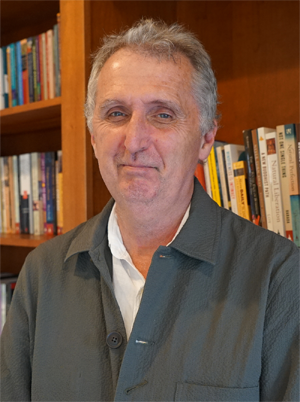
Charles Hallisey is the Yehan Numata Senior Lecturer on Buddhist Literatures at Harvard Divinity School and an authority on Sinhala literature.
Biography
Hallisey obtained his AB from Colgate University, MDiv from Harvard Divinity School and later a MA from the University of Pennsylvania. Subsequently, he received his PhD from the University of Chicago.[1]
From 1996 to 2001 he was John L. Loeb Associate Professor of the Humanities in the Committee on the Study of Religion and the Department of Sanskrit and Indian Studies at Harvard University. Later in 2001 he joined the University of Wisconsin as Associate Professor in the Department of Languages and Cultures of Asia and the Religious Studies Program. He joined the Faculty of Divinity of Harvard Divinity School in the academic year 2007–08.[1]
Works
• Therigatha: Poems of the First Buddhist Women. Murty Classical Library of India. Harvard University Press. 2015. ISBN 978-0-674-42773-0.
References
1. "Charles Hallisey".
External links
• Official website
******************
Gyatso
by Wikipedia
Accessed: 11/24/19
Origin
Word/name: Tibetan
Meaning: Ocean
Gyatso or Gyamco (Tibetan: རྒྱ་མཚོ, Wylie: rgya mtsho, ZYPY: Gyamco), is a Tibetan personal name meaning "ocean". It is also written Rgya-mtsho in Wylie transliteration, Gyaco in Tibetan pinyin, Gyatsho in Tournadre Simplified Phonetic Transcription and Gyatso in THDL Simplified Phonetic Transcription. In the Lhasa dialect, it is pronounced [càtsʰo] or [càmtsʰo]. In accordance with the latter pronunciation, it can also be spelled "Gyamtso" in English.
Notable persons whose names include "Gyatso" include:
• Each Dalai Lama, other than the 1st, has had Gyatso as the second word of his personal name; for instance, the current Dalai Lama is named Tenzin Gyatso. See the list of Dalai Lamas;
• Chödrak Gyatso, the 7th Karmapa;
• Chögyam Trungpa (Chögyam is short for Chögyi Gyamtso), Buddhist teacher;
• Gyamco, village in Tibet
• Geshe Kelsang Gyatso, the founder of the New Kadampa Tradition (NKT);
• Khenpo Tsültrim Gyamtso, a Karma Kagyu lama;
• Palden Gyatso, a monk who served thirty-three years as a political prisoner
• Desi Sangye Gyatso, 17th century political figure
• Geshe Sherab Gyatso, 20th century Communist politician
• Thubten Gyatso, an Australian Gelug monk.
• Monk Gyatso, a character from the Nickelodeon cartoon Avatar: The Last Airbender.
by Wikipedia
Accessed: 11/24/19
NOTICE: THIS WORK MAY BE PROTECTED BY COPYRIGHT
YOU ARE REQUIRED TO READ THE COPYRIGHT NOTICE AT THIS LINK BEFORE YOU READ THE FOLLOWING WORK, THAT IS AVAILABLE SOLELY FOR PRIVATE STUDY, SCHOLARSHIP OR RESEARCH PURSUANT TO 17 U.S.C. SECTION 107 AND 108. IN THE EVENT THAT THE LIBRARY DETERMINES THAT UNLAWFUL COPYING OF THIS WORK HAS OCCURRED, THE LIBRARY HAS THE RIGHT TO BLOCK THE I.P. ADDRESS AT WHICH THE UNLAWFUL COPYING APPEARED TO HAVE OCCURRED. THANK YOU FOR RESPECTING THE RIGHTS OF COPYRIGHT OWNERS.

Janet Gyatso
Born Janet Frank
Philadelphia, Pennsylvania
Nationality American
Education University of California at Berkeley (BA, MA, and PhD)
Occupation Professor of Buddhist Studies, Associate Dean for Faculty and Academic Affairs
Years active 1981- current
Employer Harvard Divinity School
Known for Study of Buddhism and Tibetan and South Asian culture
Notable work
Being Human in a Buddhist World
Women in Tibet
Apparitions of the Self
In the Mirror of Memory
(See § Works.)
Janet Gyatso is a Religious Studies scholar currently employed as the Hershey Professor of Buddhist Studies and the Associate Dean for Faculty and Academic Affairs at Harvard Divinity School.[1] She is a member of the American Academy of Arts and Sciences. Gyatso's research interests are in Buddhism and its relationship to Tibetan and South Asian civilizations.[1]
Education
Gyatso attended the University of California at Berkeley for her BA, MA and PhD. She received her PhD in 1981 in the department of South and Southeast Asian Languages and Literatures [at Berkeley,] with a dissertation on Thangtong Gyalpo and the visionary tradition of Tibetan Buddhism [2][3] Prior to her PhD, she completed her Master of Arts in 1974 in Sanskrit, and her Bachelor of Arts in 1972 in Religious studies at Berkeley.
Career
Gyatso currently teaches at Harvard Divinity School and has taught with Harvard since 2001.[4] She is the first Hershey Professor of Buddhist Studies at Harvard's Divinity School and is the Associate Dean of Faculty and Academic Affairs. Prior to teaching at Harvard, Gyatso taught at Amherst College (between 1987-2001), the University of Michigan (Spring 1999) and Wesleyan University (1986–87; Spring 1988).[3]
From 2000-2006, Gyatso held the position of president of the International Association of Tibetan Studies. From 2004-2010, she was co-chair of the Buddhism Section of the American Academy of Religion.[1]
Research
Gyatso is known for her work on Tibet, primarily through text analysis and has focused on the twelfth to eighteenth centuries, examining the introduction of Buddhism to Tibet and its eventual status as mainstream in Tibet. Her first monograph explored the writing of autobiography in Tibet, and translated and analysed one of its most beautiful examples, the visionary journals of 'Jigs med gling pa (Apparitions of the Self, Princeton, 1998). Her more recent book, Being Human in a Buddhist World, studied the relationship between Buddhism and medicine in early modern Tibet.[5] Her work has been credited by Barbara Gerke as helping to develop our understanding of the relationship between science and religion in early modern Tibetan culture.[6]
Gyatso has also edited a book entitled Women in Tibet, a compilation of essays on the topic.[7] Gyatso and her fellow editor Hannah Havnevik put this book together to draw attention to the lack of research in the area of women in Tibet.[7] A previous edited collection by Gyatso was "In the Mirror of Memory" (State University of New York Press, 1992), a study of the types of memory theorized and used in Buddhist practice. Other topics of interest have been the reception of Indian poetic theory in Tibetan literature, the nature of experience in Buddhist thought and practice, Buddhist monasticism, and Buddhist conceptions of sex and gender, including the "third sex." She is currently working on animal ethics.
Works
Books
• Being Human in a Buddhist World: An Intellectual History of Medicine in Early Modern Tibet (2015)[8][9][10][11]
• Women of Tibet. Co-edited with Hanna Havnevik. (2005)
• Apparitions of the Self: The Secret Autobiographies of a Tibetan Visionary (1998)[12][13][14][15]
• In the Mirror of Memory: Reflections on Mindfulness and Remembrance in Indian and Tibetan Buddhism. Edited volume of essays.(1992)[16][17]
Articles
• Turning Personal: Recent Work on Autobiography in Tibetan Studies Journal of Asian Studies (2016) 229-235
• One Picture. In Tibetan and Himalayan Healing - An Anthology for Anthony Aris, edited by Charles Ramble and Ulrike Roesler (2014) 273-278.
• Buddhist Practices and Ideals in Desi Sangye Gyatso’s Medical Paintings in Bodies in Balance: The Art of Tibetan Medicine, edited by Theresia Hofer (2013) 198-220.
• Looking for Gender in the Medical Paintings of Desi Sangye Gyatso, Regent of the Tibetan Buddhist State in Asian Medicine: Tradition and Modernity in the med issue on Gender, Health and Medicine in Tibet edited by Theresia Hofer and Heidi Fjeld [no] (2010–11) 217-292.
• Discerning Tibetan Modernities: Moments, Methods, Assumptions in Mapping the Modern in Tibet edited by Gray Tuttle (2011) 1-37.
• Experience, Empiricism, and the Fortunes of Authority: Tibetan Medicine and Buddhism on the Eve of Modernity pp. 311–335 in Forms of Knowledge in Early Modern Asia: Explorations in the Intellectual History of India and Tibet edited by Sheldon Pollock (2011)
• Female Ordination in Buddhism: Looking into a Crystal Ball, Making a Future in Dignity and Discipline edited by Thea Mohr and Jampa Choedron (2010) pp. 1–21.
• Spelling Mistakes, Philology, and Feminist Criticism: Women and Boys in Tibetan Medicine in Tibetan Studies in Honor of Samten Karmay Dharamsala: Amnye Machen InstituteFrançoise Pommaret edited by Jena-Luc Achard (2009) 81-98.
• Introduction in Body & Spirit: Tibetan Medical Paintings edited by Laila Williams (2009) 3-13
• Culture and Education in Authenticating Tibet: Answers to China's 100 Questions edited by Anne-Marie Blondeau and Katia Buffetrille (2008)
• A Partial Genealogy of the Lifestory of Yeshe Tsogyal In Journal of the International Association of Tibetan Studies Seminar (2006) 1-27
• Sex in Critical Terms for the Study of Buddhism edited by Donald S. Lopez (2005) 271-290.
• The Ultimate Couple in Buddhist Scriptures edited by Donald S. Lopez (2004) 488-494.
• Compassion at the Millenium: A Buddhist Salvo for the Ethics of the Apocalypse In Thinking Through the Death of God: Essays on the Thought of Thomas J. J. Altizer edited by Brian Schroeder and Lissa McCullough (2004)
• One Plus One Makes Three: Buddhist Gender Conception and the Law of the Non-Excluded Middle in History of Religions (2003): 89-115.
• The Ins and Outs of Self-Transformation: Personal and Social Sides of Visionary Practice in Tibetan Buddhism in Self and Self-Transformation in the History of Religions edited by David Shulman 2002.
• Longchenpa and the Possession of the Dakinis in Tantra in Practice edited by David White (2000) 239-265
• Healing Burns with Fire: The Facilitations of Experience in Tibetan Buddhism in Journal of the American Academy of Religion (1999) 113-147.
• Introduction to Lama Chonam and Sangye Khandro in The Lives and Liberation of Princess Mandarava (1998) 1-14
• Counting Crows' Teeth: Tibetans and Their Diaries in Les habitants du Toit du monde edited by Samten Karmay and Phillip Sagant (1997) 159-178
• The Relic Text as Prophecy: The Semantic Drift of Byang-bu and its Appropriation in the Treasure Tradition in Commemorative Volume for Rai Bahadur T.D edited by Densapa Tashi Tsering, a special issue of Tibet Journal. Still forthcoming.
• Drawn from the Tibetan Treasury: The Gter-ma Literature in Tibetan Literature: Studies in Genre edited by José Ignacio Cabezón and Roger Jackson (1996) 147-169
• An Avalokitesvara Sadhana in Religions of Tibet in Practice edited by Donald S. Lopez (1997) 266-270
• From the Autobiography of a Visionary in Religions of Tibet in Practice edited by Donald S. Lopez (1997) 369-375.
• Guru Chos-dbang's gTer 'byung chen mo: An Early Survey of the Treasure Tradition and its Strategies in Discussing Bon Treasure in Tibetan Studies: Proceedings of the Sixth International Association of Tibetan Studies Seminar edited by Per Kvaerne (1994) 275-287.
• The Logic of Legitimation in the Tibetan Treasure Tradition in History of Religions (1993) 97-134.
• Autobiography in Tibetan Religious Literature: Reflections on Its Modes of Self-Presentation in Tibetan Studies:Proceedings of the 5th International Association of Tibetan Studies Seminar. Narita: Naritasan Institute for Buddhist Studies edited by Shoren Ihara and Zuiho Yamaguchi (1992) 465-478
• Genre, Authorship and Transmission in Visionary Buddhism: The Literary Traditions of Thang-stong Rgyal-po in Tibetan Buddhism: Reason and Revelation edited by Ronald Davidson and Steven Goodman (1992) 95-106.
• Down with the Demoness: Reflections on a Feminine Ground in Tibet in Tibet Journal XII.4 (1987) 34-46
• Signs, Memory and History: A Tantric Buddhist Theory of Scriptural Transmission in Journal of the International Association of Buddhist Studies (1986) 7-35.
• Thang-stong rGyal-po, Father of the Tibetan Drama: The Bodhisattva as Artist in Zlos-gar, The Tibetan Performing Arts: Commemorative Issue on the Occasion of the 25th Anniversary of the Founding of the Tibetan Institute of Performing Arts edited by Jamyang Norbu (1986) 91-104.
• The Development of the gCod Tradition in Soundings in Tibetan Civilization edited by Barbara Aziz and Matthew Kapstein (1985) 74-98.
• The Teachings of Thang-stong rGyal-po in Tibetan Studies in Honour of Hugh Richardson edited by Michael Aris and Aung San Suu Kyi (1980) 111-119
Awards and accolades
• 2017 - Elected to American Academy of Arts and Sciences[18]
• 2017 E. Gene Smith Award for Best Book in Inner Asia; Association of Asian Studies, for her book Being Human in a Buddhist World'
• 2016 - Toshihide Numata Book Award for her book Being Human in a Buddhist World[19]
References
1. "Janet Gyatso". hds.harvard.edu. Retrieved 2018-12-01.
2. "Digital Dharma". digitaldharma.com. Retrieved 2018-12-10.
3. hwpi.harvard.edu (PDF) http://hwpi.harvard.edu/files/hds/files ... ug2011.pdf. Retrieved 2018-12-10.Missing or empty |title= (help)
4. "Janet Gyatso | Harvard University - Academia.edu". harvard.academia.edu. Retrieved 2018-12-01.
5. Gyatso, Janet (2015). Being Human in a Buddhist World: An Intellectual History of Medicine in Early Modern Tibet. Columbia University Press. ISBN 978-0-231-53832-9.
6. Barbara, Gerke (2016-05-27). Review of ' Being Human in a Buddhist World: An Intellectual History of Medicine in Early Modern Tibet' by Janet Gyatso. Himalaya, the Journal of the Association for Nepal and Himalayan Studies. OCLC 954619043.
7. Gyatso, Janet & Havnevik, Hanna (eds.) (2005). Women in Tibet. C. Hurst. ISBN 978-1850656531. OCLC 248178272.
8. Samuel, Geoffrey (2016-08-01). "Janet Gyatso, Being Human in a Buddhist World: An Intellectual History of Medicine in Early Modern Tibet". Social History of Medicine. 29 (3): 634–636. doi:10.1093/shm/hkw024. ISSN 0951-631X.
9. Salguero, C. Pierce (2016-03-30). "Being Human in a Buddhist World: An Intellectual History of Medicine in Early Modern Tibet by Janet Gyatso (review)". Bulletin of the History of Medicine. 90 (1): 150–152. doi:10.1353/bhm.2016.0007. ISSN 1086-3176.
10. Kværne, Per (2016-12-21). "Gyatso Janet, Being human in a Buddhist world. An intellectual history of medicine in early modern Tibet. New York, Columbia University Press, 2015, x + 519 pages, ISBN 978-0-231-16496-2". Études Mongoles et Sibériennes, Centrasiatiques et Tibétaines (47). ISSN 0766-5075.
11. Katharina Sabernig, "Janet Gyatso. Being Human in a Buddhist World: An Intellectual History of Medicine in Early Modern Tibet.," Isis 107, no. 1 (March 2016): 148-149.
12. Geoffrey, Samuel (2000). "Reviewed Work: Apparitions of the Self: The Secret Autobiographies of a Tibetan Visionary by Janet Gyatso". Journal of the American Academy of Religion. 68 (3): 642–644. JSTOR 1465902.
13. Willis, Janice D. (2000). "Reviewed Work: Apparitions of the Self: The Secret Autobiographies of a Tibetan Visionary by Janet Gyatso". History of Religions. 39 (4): 390–393. doi:10.1086/463608. JSTOR 3176552.
14. Samuel, Geoffrey (2000). "Reviewed Work: Apparitions of the Self: The Secret Autobiographies of a Tibetan Visionary by Janet Gyatso". Journal of the American Academy of Religion. 68 (3): 642–644. doi:10.1093/jaarel/68.3.642. JSTOR 1465902.
15. Lavine, Amy (1999). "Reviewed Work: Apparitions of the Self: The Secret Autobiographies of a Tibetan Visionary by Janet Gyatso". The Journal of Religion. 79 (3): 511–512. doi:10.1086/490491. JSTOR 1205529.
16. Bartholomeusz, Tessa; Gyatso, Janet (1993). "In the Mirror of Memory: Reflections of Mindfulness and Remembrance in Indian and Tibetan Buddhism". The Journal of Asian Studies. 52 (4): 1053. doi:10.2307/2059409. ISSN 0021-9118. JSTOR 2059409.
17. Fox, Alan; Gyatso, Janet (1997). "In the Mirror of Memory: Reflections on Mindfulness and Remembrance in Indian and Tibetan Buddhism". Philosophy East and West. 47 (4): 616. doi:10.2307/1400312. ISSN 0031-8221. JSTOR 1400312.
18. "Janet Gyatso Elected to American Academy of Arts and Sciences". hds.harvard.edu. Retrieved 2018-12-01.
19. "Announcements - Buddhist Studies - University of California, Berkeley". buddhiststudies.berkeley.edu. Retrieved 2018-12-01.
External links
• Janet Gyatso on IMDb
******************
Doris [Black] Frank, 88, Fled Pogroms and Found Vineyard
by Vineyard Gazette
Thursday, April 12, 2007 - 8:00pm
The family of Doris [Black] Frank is saddened to announce her death on Wednesday. She had been living for the last two and a half years in Brighton at Chestnut Park, an assisted living facility close to her daughter's home. She died peacefully of natural causes. She was 88.
Doris was born in the Ukraine, near Kiev, in 1918. With the rest of her immediate and some of her extended family, she fled the pogroms in 1921, moving across Europe in stealth until they finally sailed to Canada at some time in 1923. It is not certain if the port of sail was Liverpool, England or a port in Belgium.
Doris was raised and schooled in Montreal, where she lived with her two sisters, Fannie and Ray, and her parents Benjamin and Sosia Black. In 1939 she attended an adult's socialist tennis camp in upstate New York where she met her future husband, Gilbert Frank, to whom she was eventually married in 1941 in Montreal.
They settled in Philadelphia, Pa., where Doris gave birth to her son Daniel in 1944 and her daughter Janet in 1949. During these years, in addition to being a mother and housewife, Doris was active in the League of Women Voters and various leftist Jewish organizations. Following the example of members of Gilbert's family, including his second cousin Hattie Jacobs and her husband George, and later his sisters Rea and Selma Frank, Doris and Gilbert moved to the Vineyard in 1980. They lived there happily until Gilbert died in 2004.
Throughout her life, Doris was an observant Jew who cared passionately about the fate of the Jewish people, the state of Israel, and the learning of Hebrew and Yiddish culture. She and her husband were also avid lovers of nature and animals. They enjoyed the simple life they were able to achieve on the Vineyard, and continued to have a wide circle of friends and social causes in which they participated well into their 80s.
Survivors include her children Daniel Frank and Janet Gyatso, along with their respective spouses Doris Clerc and Charles Hallisey; her grandchildren Johanna, Jeremy, Michael and Zoey Frank, as well as Sean, Stephen and Gina Hallisey; her great grandchildren Ben, Jillian and Allison Troth; Gilbert's sister, Selma Frank of Vineyard Haven; and the following nieces and nephews who are children of her late sisters Fannie Silverman and Ray Yellin: Peretz, Ozzie, and Jerry Silverman, and Esther Wynn, Sorel Cohen, and Dorothy Yellin.
A funeral will be held on Sunday at 9:30 a.m. at the Hebrew Cemetery in Vineyard Haven. Arrangements are under the care of the Chapman, Cole & Gleason Funeral Home, Oak Bluffs.
******************
Charles Hallisey
by Wikipedia
Accessed: 11/24/19

Charles Hallisey is the Yehan Numata Senior Lecturer on Buddhist Literatures at Harvard Divinity School and an authority on Sinhala literature.
Biography
Hallisey obtained his AB from Colgate University, MDiv from Harvard Divinity School and later a MA from the University of Pennsylvania. Subsequently, he received his PhD from the University of Chicago.[1]
From 1996 to 2001 he was John L. Loeb Associate Professor of the Humanities in the Committee on the Study of Religion and the Department of Sanskrit and Indian Studies at Harvard University. Later in 2001 he joined the University of Wisconsin as Associate Professor in the Department of Languages and Cultures of Asia and the Religious Studies Program. He joined the Faculty of Divinity of Harvard Divinity School in the academic year 2007–08.[1]
Works
• Therigatha: Poems of the First Buddhist Women. Murty Classical Library of India. Harvard University Press. 2015. ISBN 978-0-674-42773-0.
References
1. "Charles Hallisey".
External links
• Official website
******************
Gyatso
by Wikipedia
Accessed: 11/24/19
Origin
Word/name: Tibetan
Meaning: Ocean
Gyatso or Gyamco (Tibetan: རྒྱ་མཚོ, Wylie: rgya mtsho, ZYPY: Gyamco), is a Tibetan personal name meaning "ocean". It is also written Rgya-mtsho in Wylie transliteration, Gyaco in Tibetan pinyin, Gyatsho in Tournadre Simplified Phonetic Transcription and Gyatso in THDL Simplified Phonetic Transcription. In the Lhasa dialect, it is pronounced [càtsʰo] or [càmtsʰo]. In accordance with the latter pronunciation, it can also be spelled "Gyamtso" in English.
Notable persons whose names include "Gyatso" include:
• Each Dalai Lama, other than the 1st, has had Gyatso as the second word of his personal name; for instance, the current Dalai Lama is named Tenzin Gyatso. See the list of Dalai Lamas;
• Chödrak Gyatso, the 7th Karmapa;
• Chögyam Trungpa (Chögyam is short for Chögyi Gyamtso), Buddhist teacher;
• Gyamco, village in Tibet
• Geshe Kelsang Gyatso, the founder of the New Kadampa Tradition (NKT);
• Khenpo Tsültrim Gyamtso, a Karma Kagyu lama;
• Palden Gyatso, a monk who served thirty-three years as a political prisoner
• Desi Sangye Gyatso, 17th century political figure
• Geshe Sherab Gyatso, 20th century Communist politician
• Thubten Gyatso, an Australian Gelug monk.
• Monk Gyatso, a character from the Nickelodeon cartoon Avatar: The Last Airbender.
